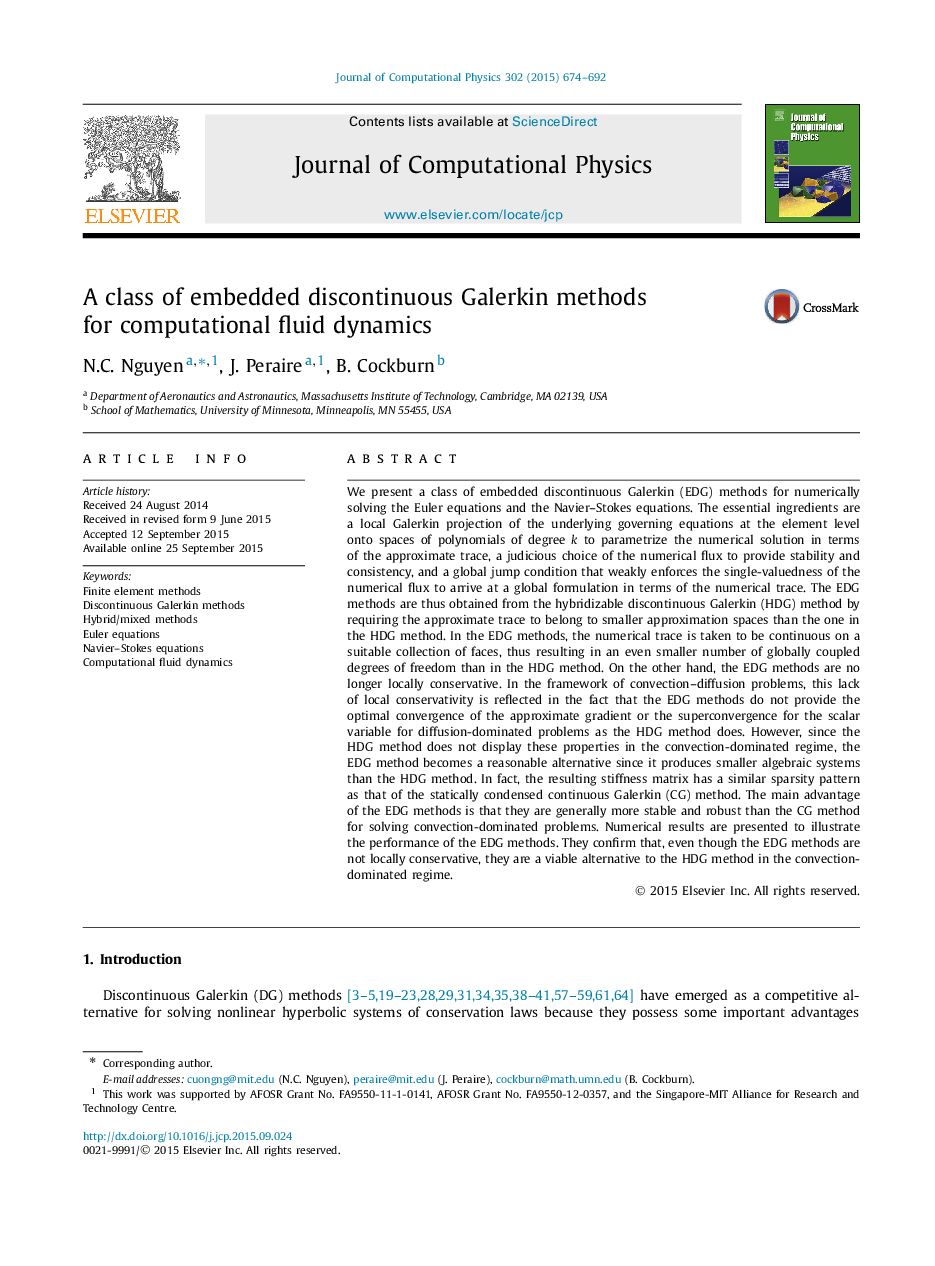| کد مقاله | کد نشریه | سال انتشار | مقاله انگلیسی | نسخه تمام متن |
|---|---|---|---|---|
| 518036 | 867549 | 2015 | 19 صفحه PDF | دانلود رایگان |

We present a class of embedded discontinuous Galerkin (EDG) methods for numerically solving the Euler equations and the Navier–Stokes equations. The essential ingredients are a local Galerkin projection of the underlying governing equations at the element level onto spaces of polynomials of degree k to parametrize the numerical solution in terms of the approximate trace, a judicious choice of the numerical flux to provide stability and consistency, and a global jump condition that weakly enforces the single-valuedness of the numerical flux to arrive at a global formulation in terms of the numerical trace. The EDG methods are thus obtained from the hybridizable discontinuous Galerkin (HDG) method by requiring the approximate trace to belong to smaller approximation spaces than the one in the HDG method. In the EDG methods, the numerical trace is taken to be continuous on a suitable collection of faces, thus resulting in an even smaller number of globally coupled degrees of freedom than in the HDG method. On the other hand, the EDG methods are no longer locally conservative. In the framework of convection–diffusion problems, this lack of local conservativity is reflected in the fact that the EDG methods do not provide the optimal convergence of the approximate gradient or the superconvergence for the scalar variable for diffusion-dominated problems as the HDG method does. However, since the HDG method does not display these properties in the convection-dominated regime, the EDG method becomes a reasonable alternative since it produces smaller algebraic systems than the HDG method. In fact, the resulting stiffness matrix has a similar sparsity pattern as that of the statically condensed continuous Galerkin (CG) method. The main advantage of the EDG methods is that they are generally more stable and robust than the CG method for solving convection-dominated problems. Numerical results are presented to illustrate the performance of the EDG methods. They confirm that, even though the EDG methods are not locally conservative, they are a viable alternative to the HDG method in the convection-dominated regime.
Journal: Journal of Computational Physics - Volume 302, 1 December 2015, Pages 674–692